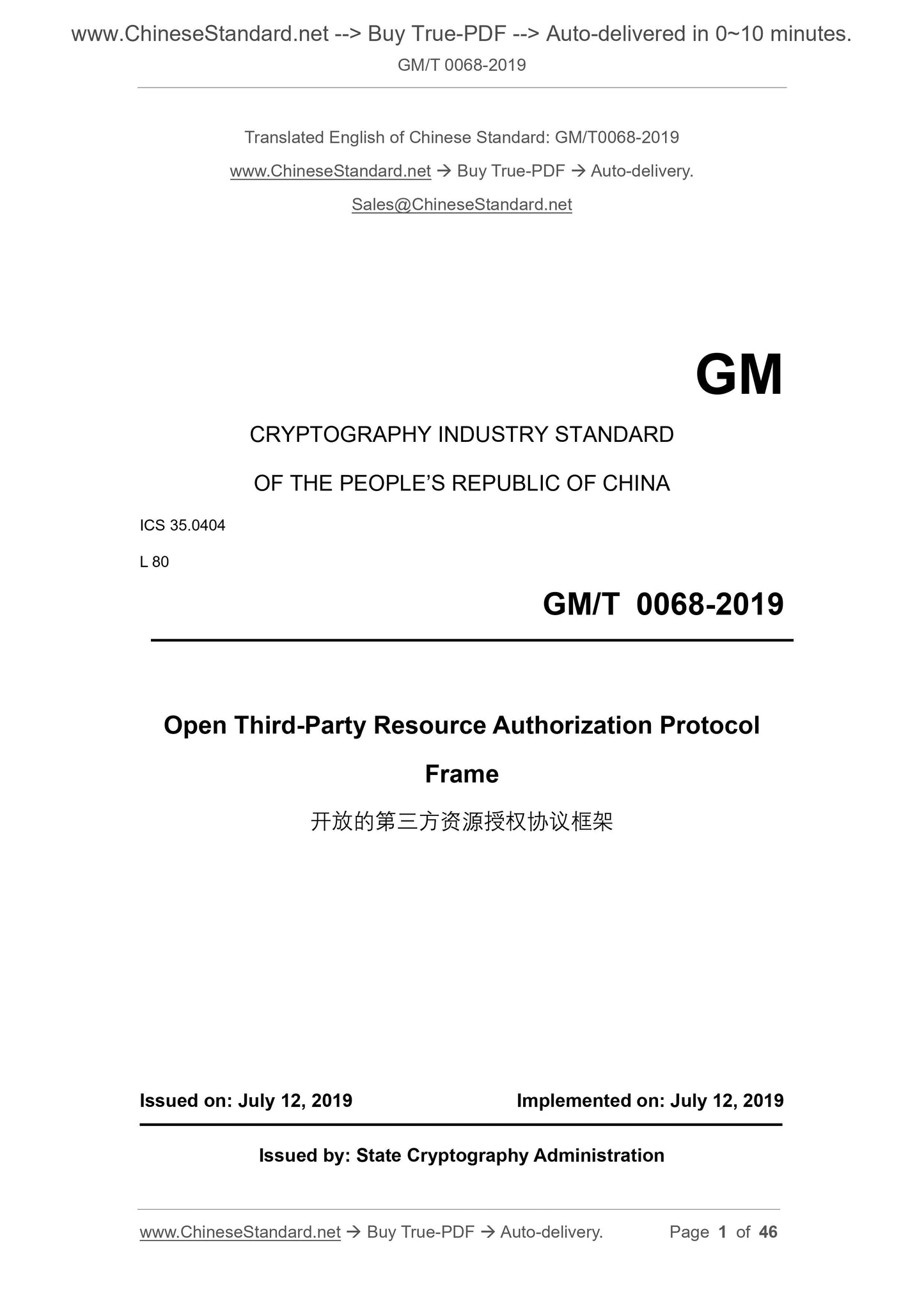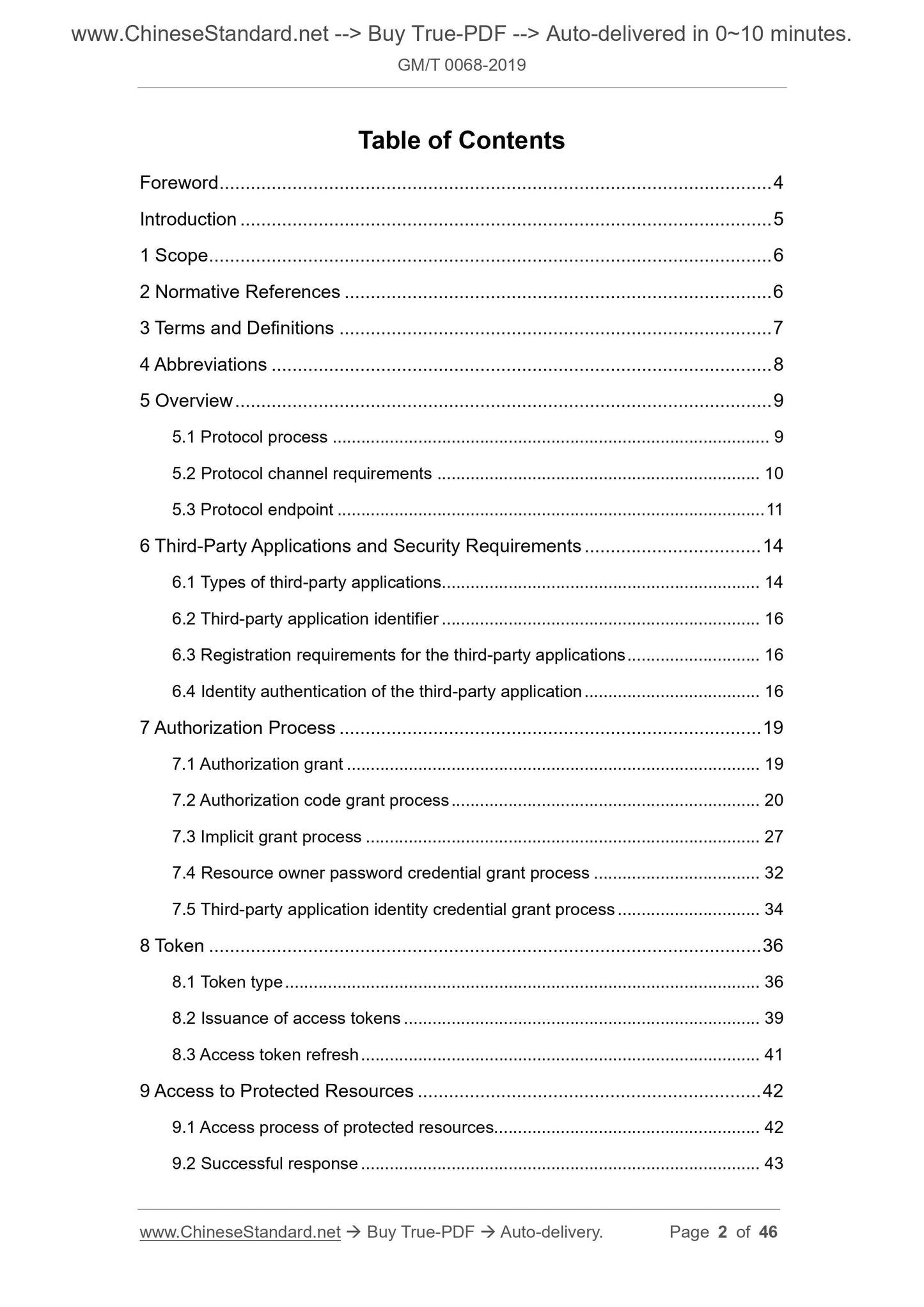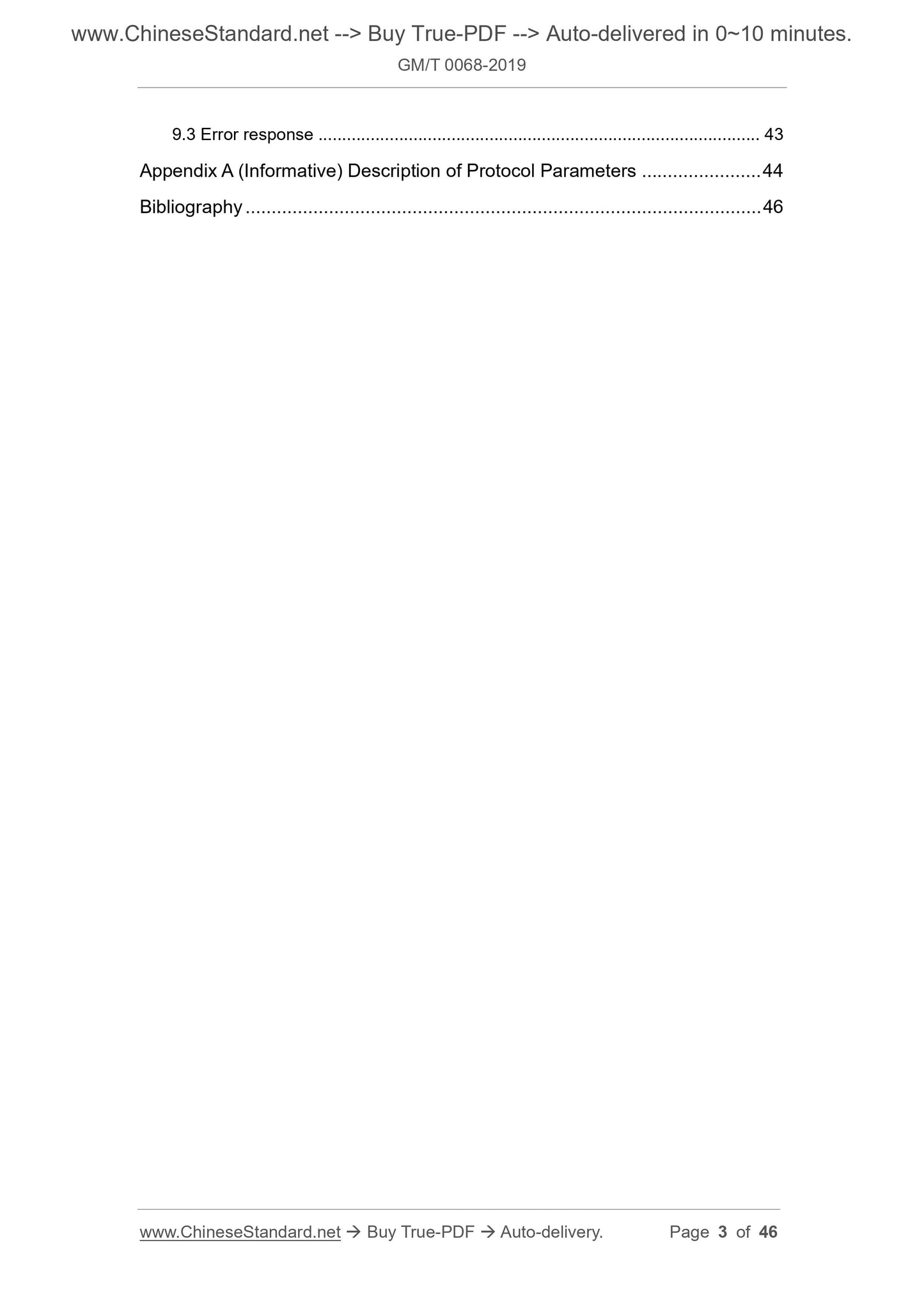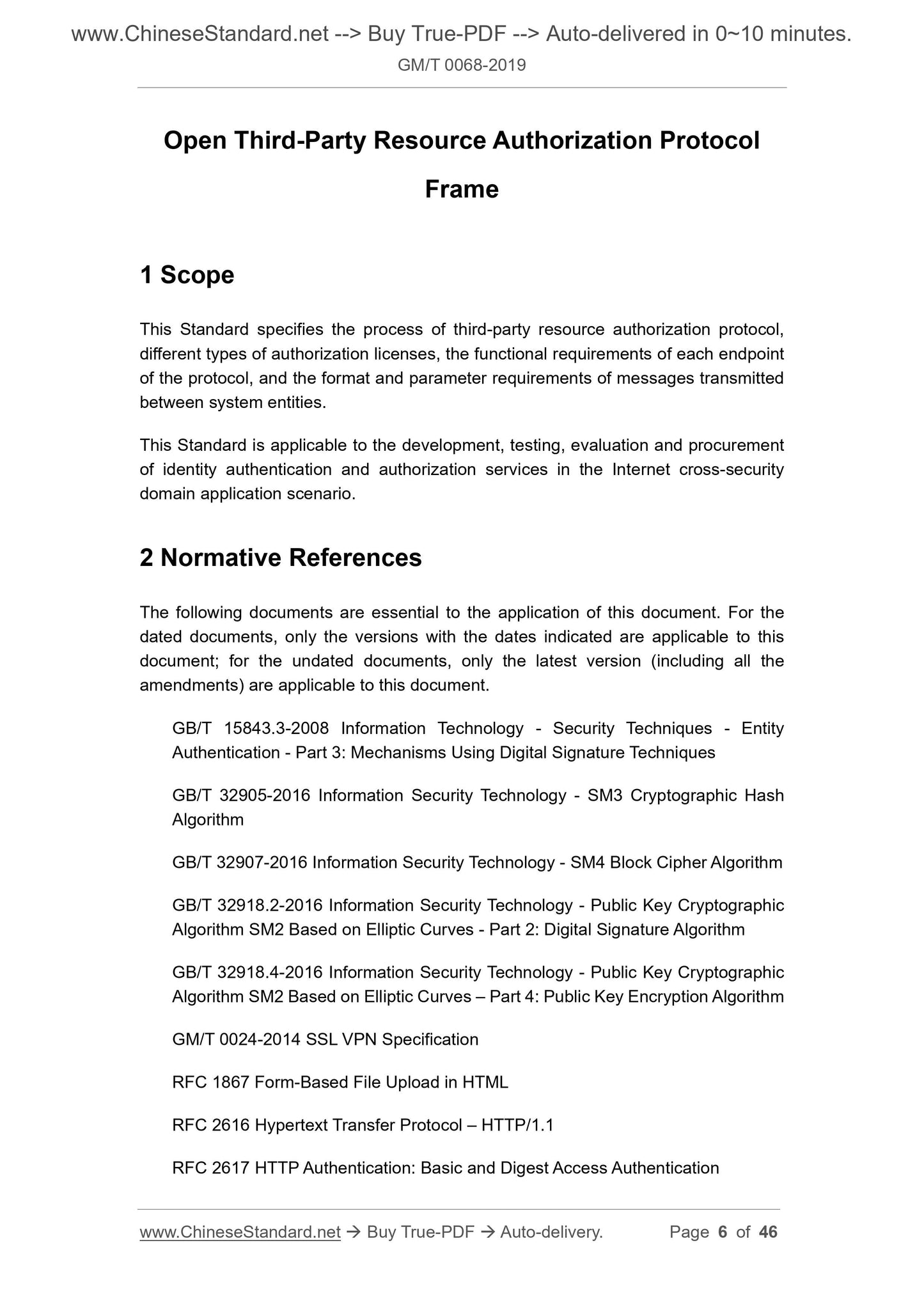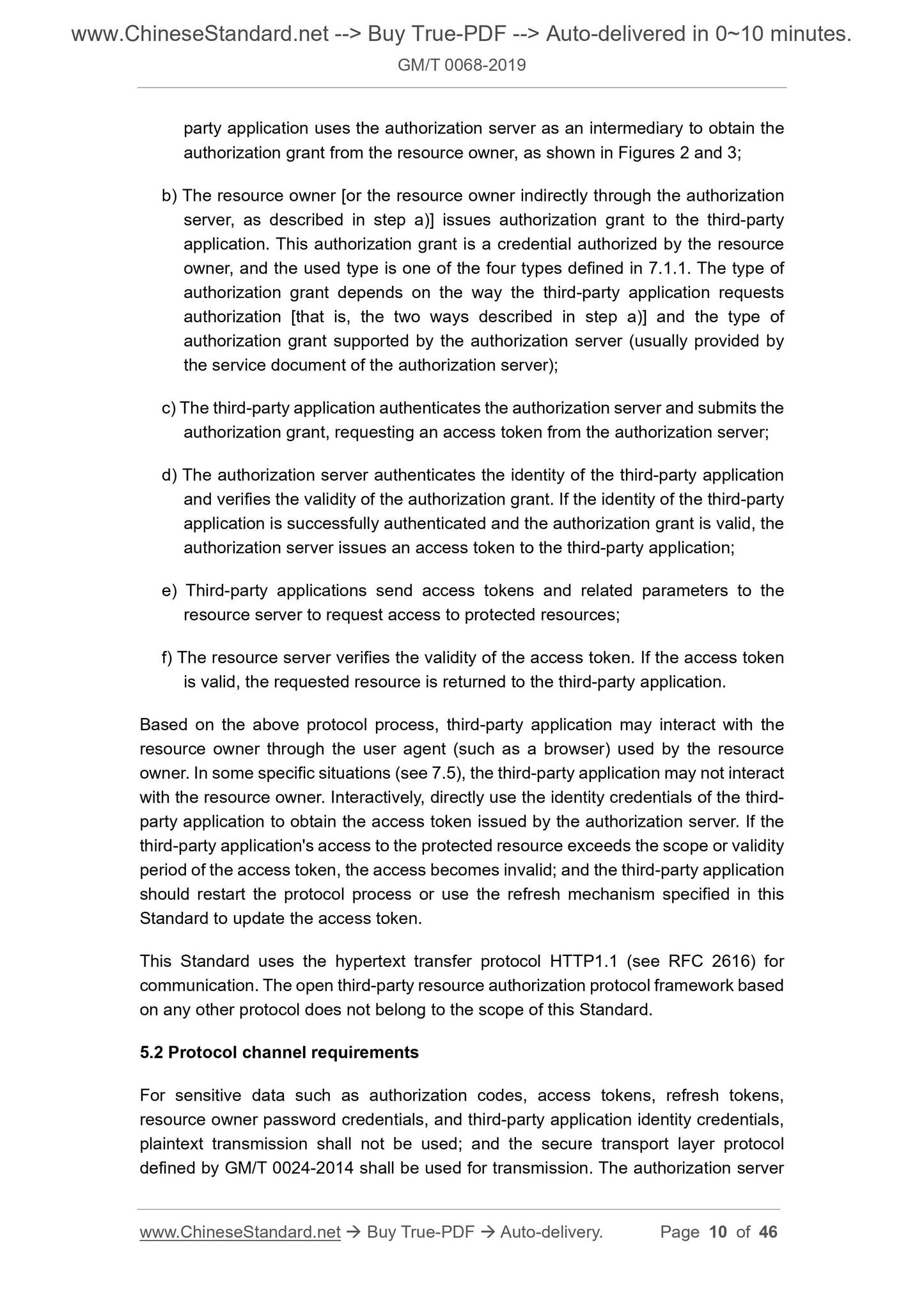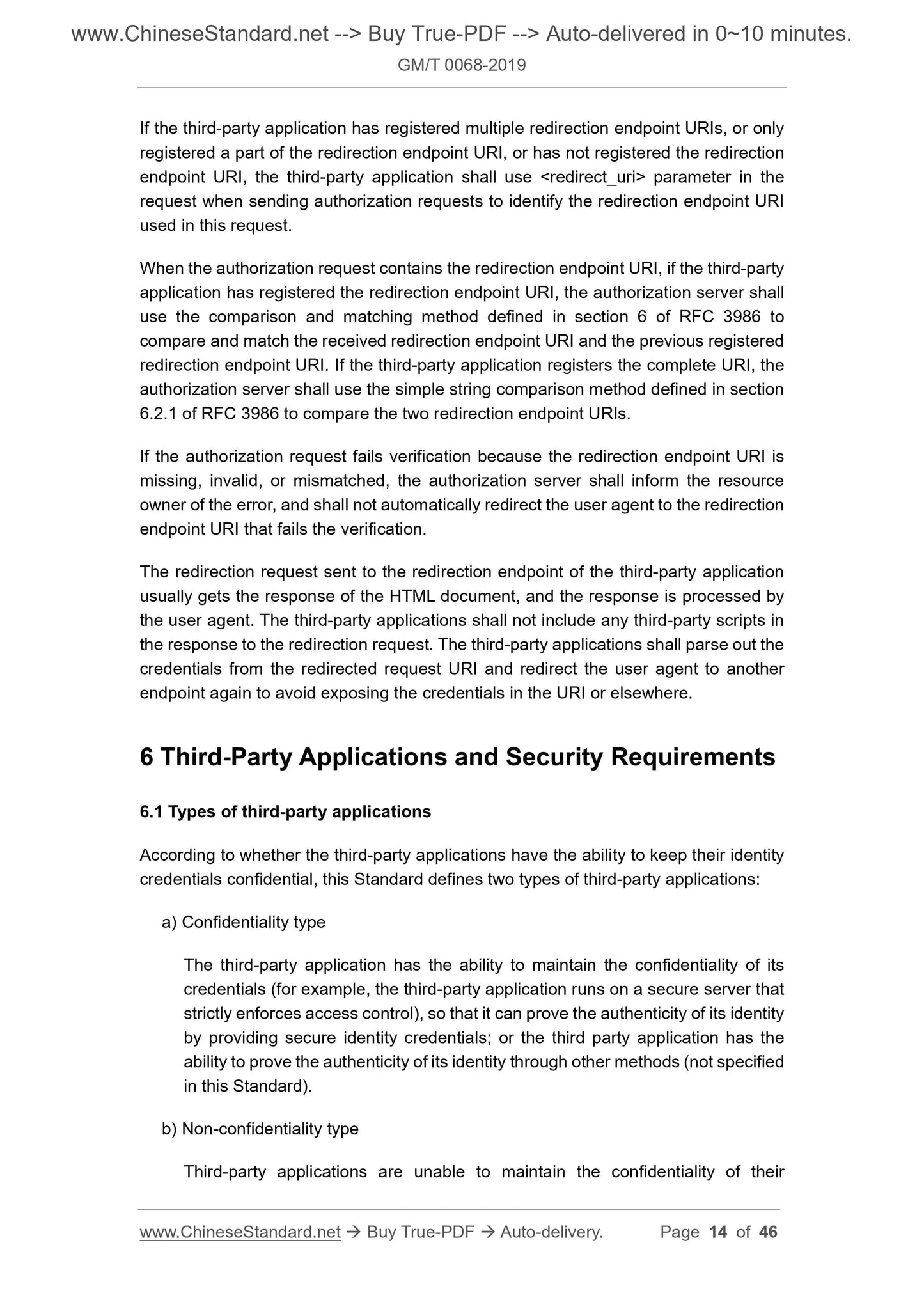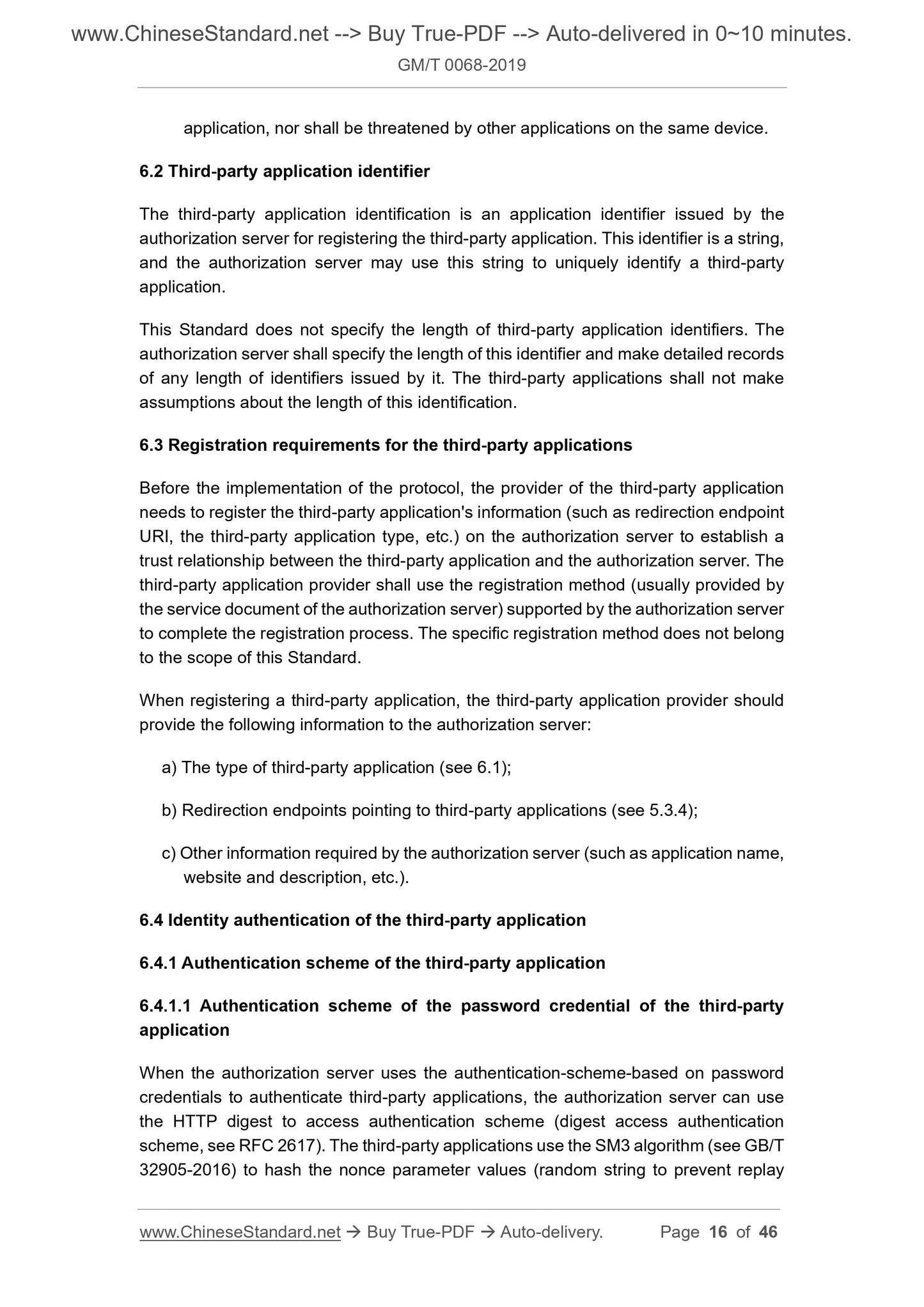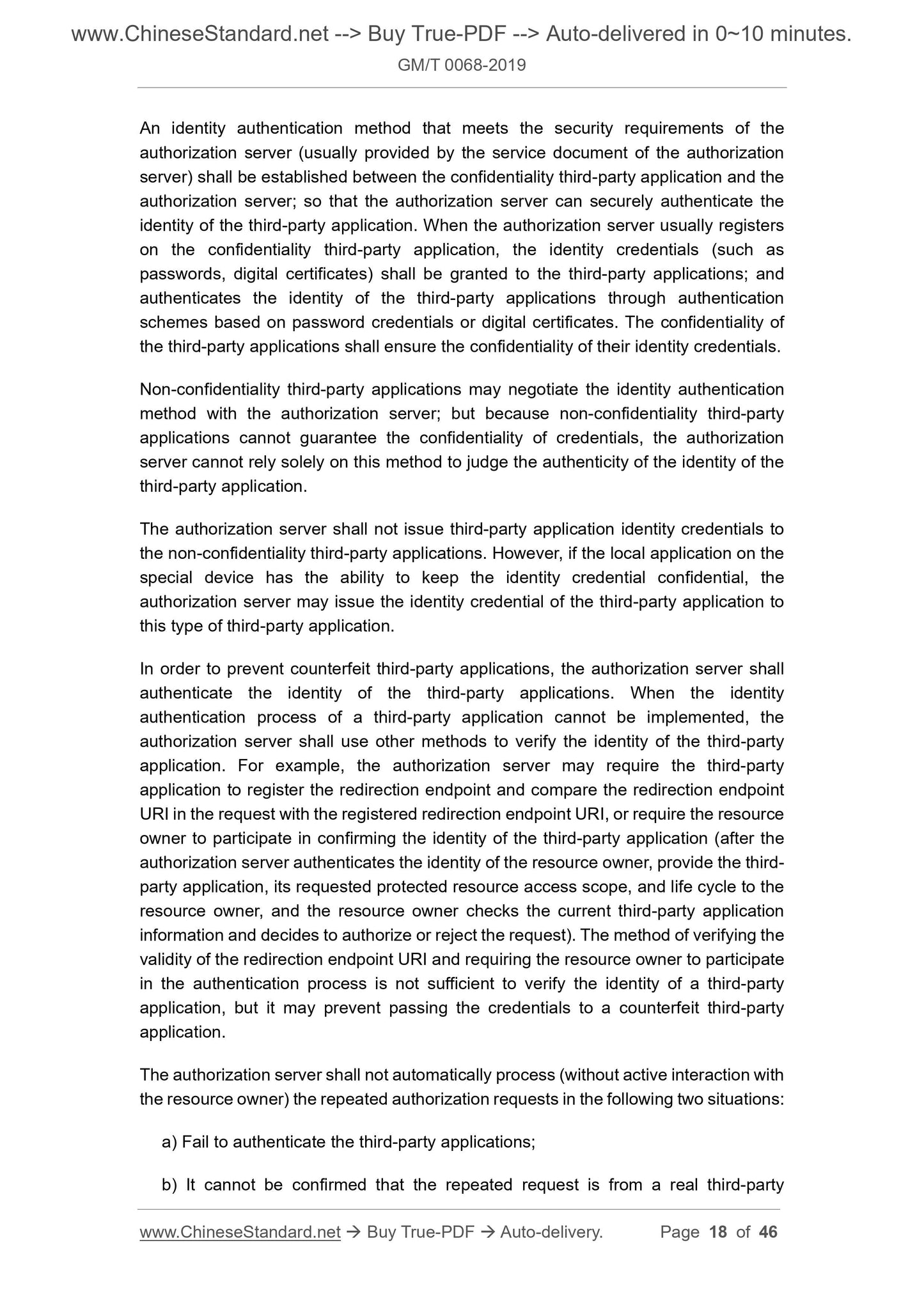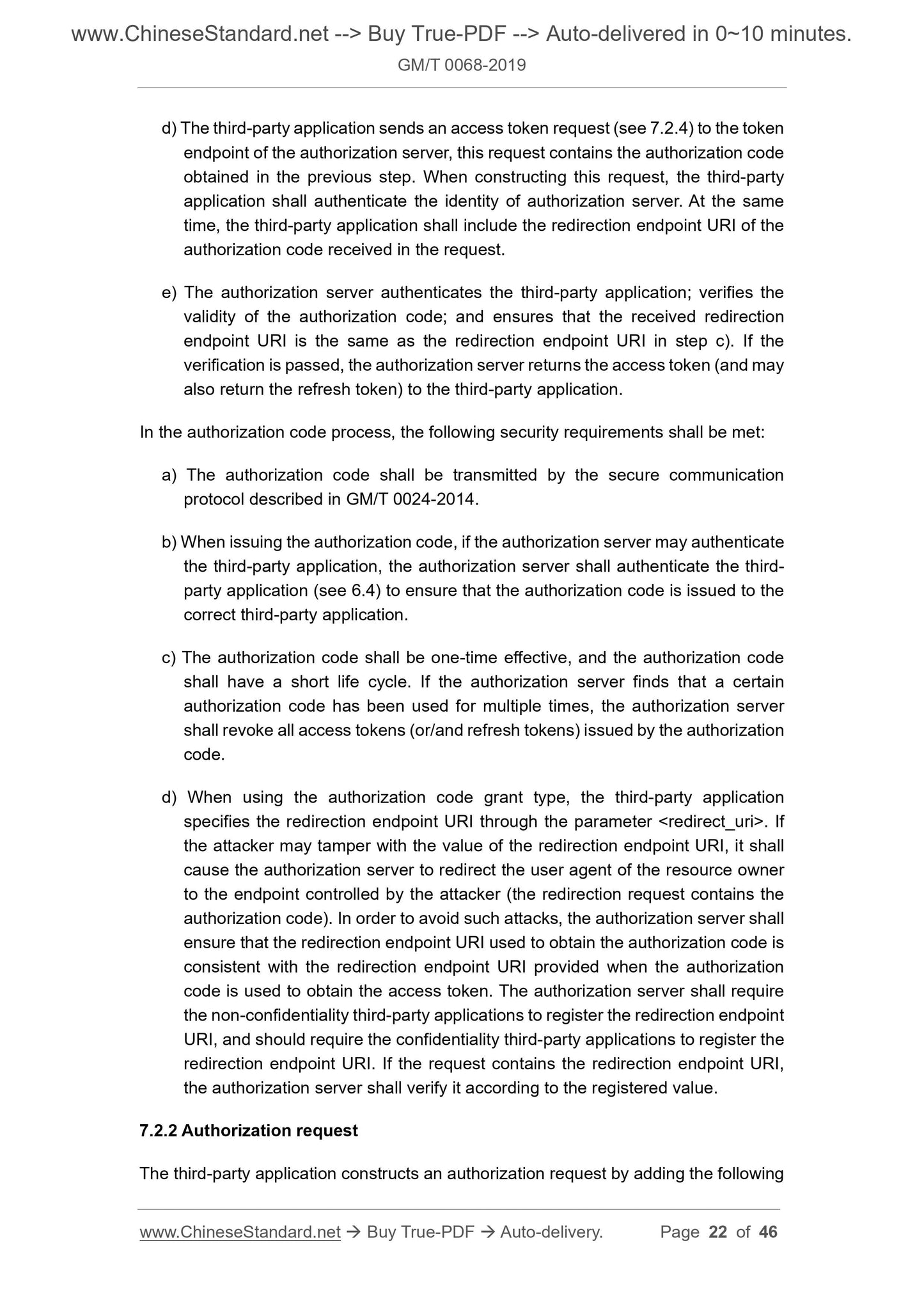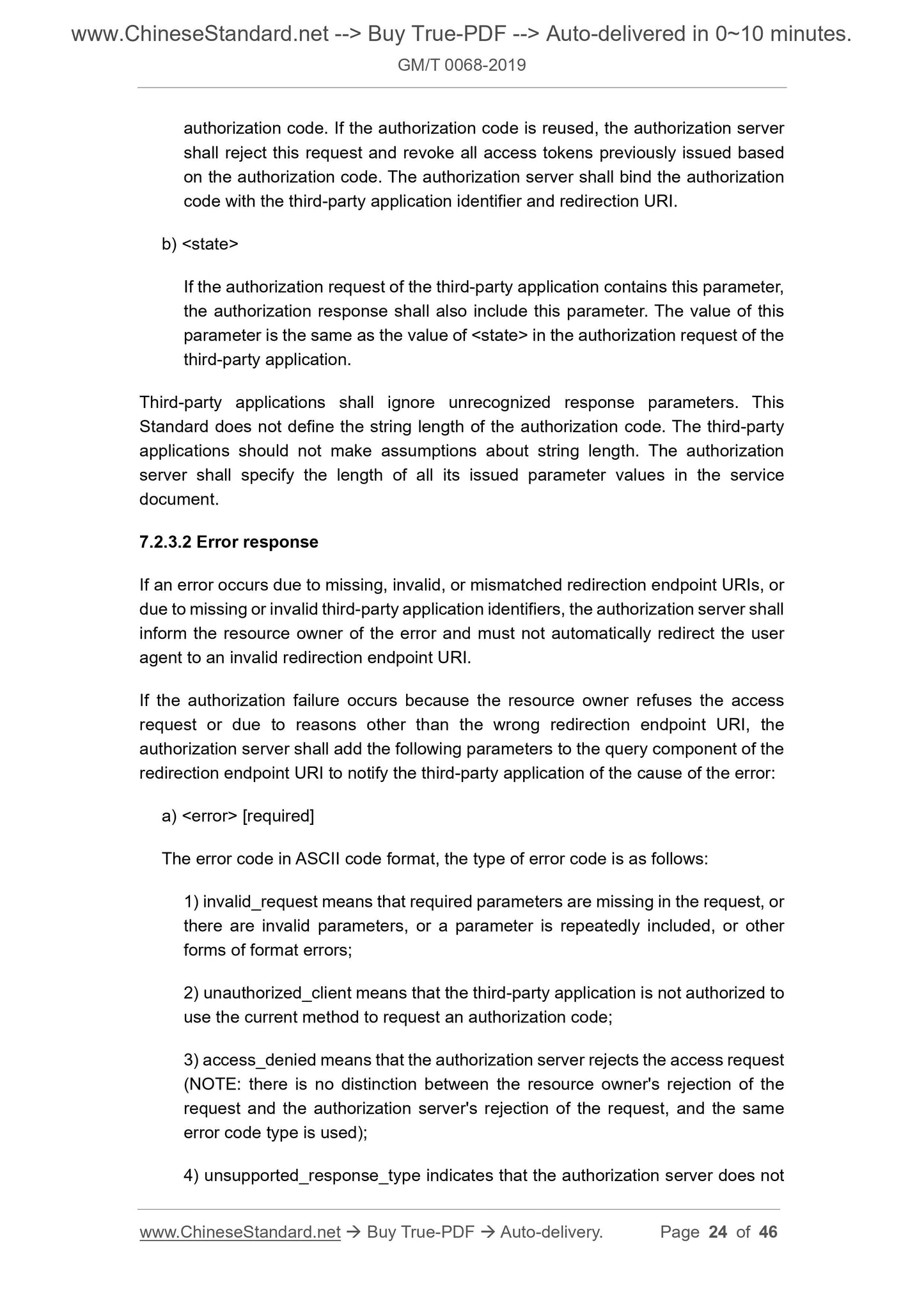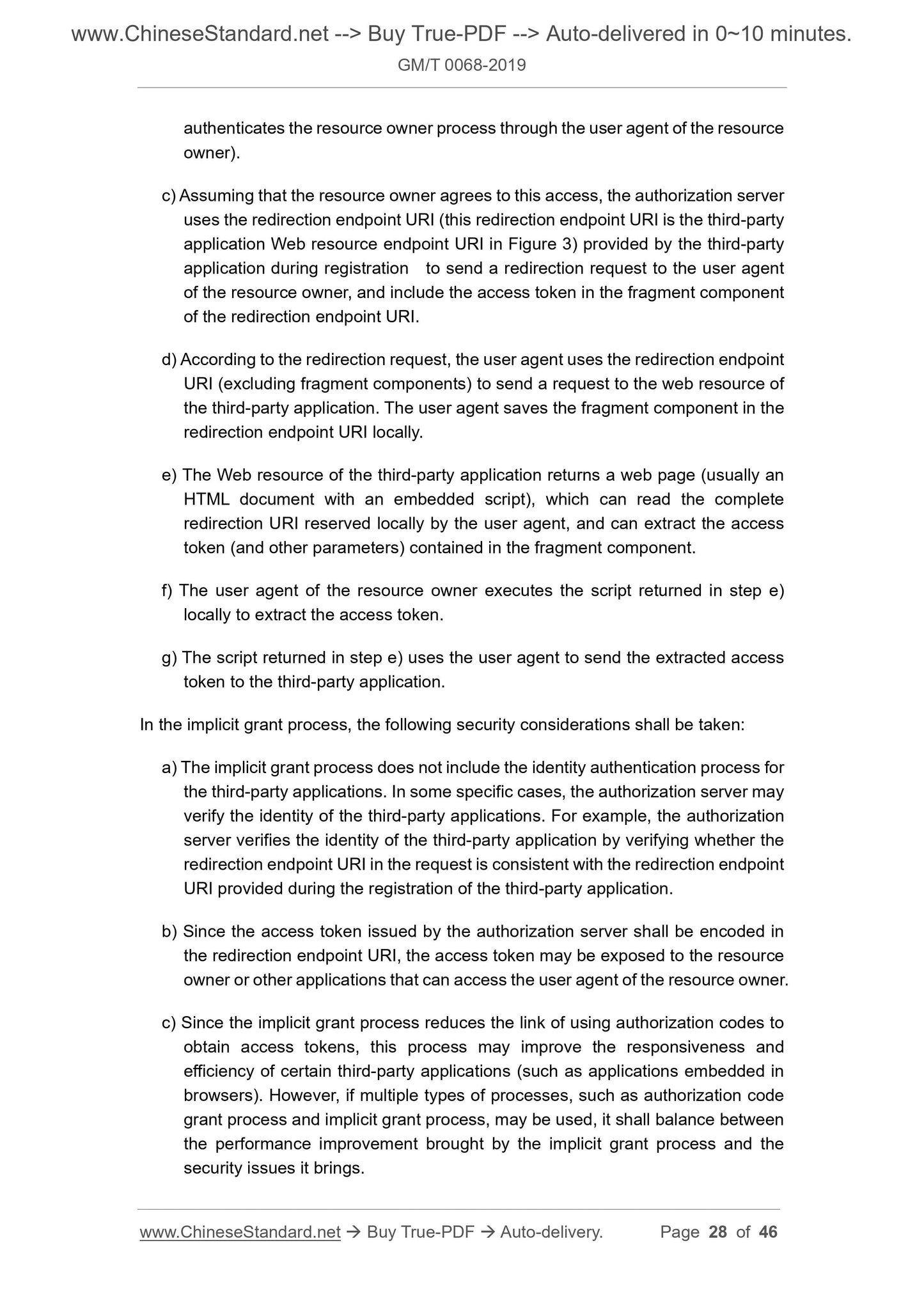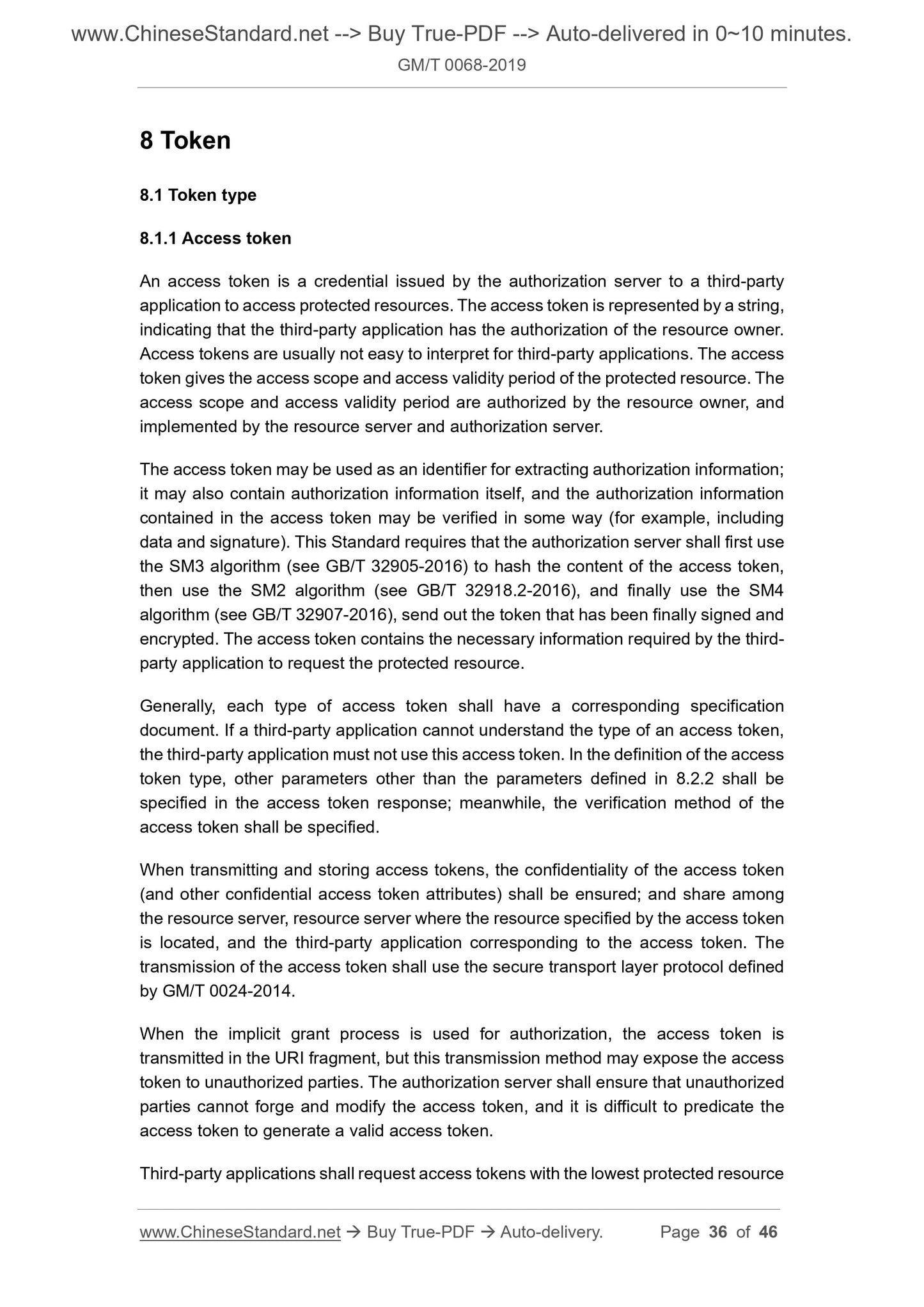1
/
of
12
www.ChineseStandard.us -- Field Test Asia Pte. Ltd.
GM/T 0068-2019 English PDF (GM/T0068-2019)
GM/T 0068-2019 English PDF (GM/T0068-2019)
Regular price
$380.00
Regular price
Sale price
$380.00
Unit price
/
per
Shipping calculated at checkout.
Couldn't load pickup availability
GM/T 0068-2019: Open Third-Party Resource Authorization Protocol Frame
Delivery: 9 seconds. Download (and Email) true-PDF + Invoice.Get Quotation: Click GM/T 0068-2019 (Self-service in 1-minute)
Newer / historical versions: GM/T 0068-2019
Preview True-PDF
Scope
This Standard specifies the process of third-party resource authorization protocol,different types of authorization licenses, the functional requirements of each endpoint
of the protocol, and the format and parameter requirements of messages transmitted
between system entities.
This Standard is applicable to the development, testing, evaluation and procurement
of identity authentication and authorization services in the Internet cross-security
domain application scenario.
Basic Data
| Standard ID | GM/T 0068-2019 (GM/T0068-2019) |
| Description (Translated English) | Open Third-Party Resource Authorization Protocol Frame |
| Sector / Industry | Chinese Industry Standard (Recommended) |
| Classification of Chinese Standard | L80 |
| Classification of International Standard | 35.040 |
| Word Count Estimation | 29,294 |
| Date of Issue | 2019 |
| Date of Implementation | 2019-07-12 |
| Issuing agency(ies) | State Administration of Cryptography |
Share
